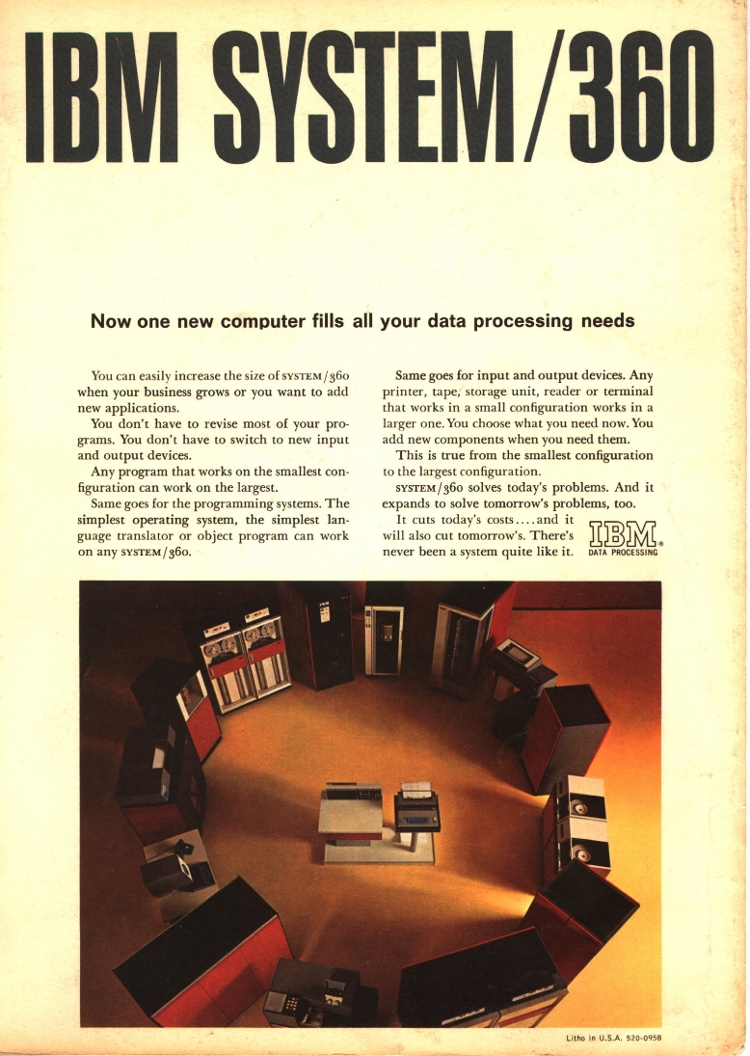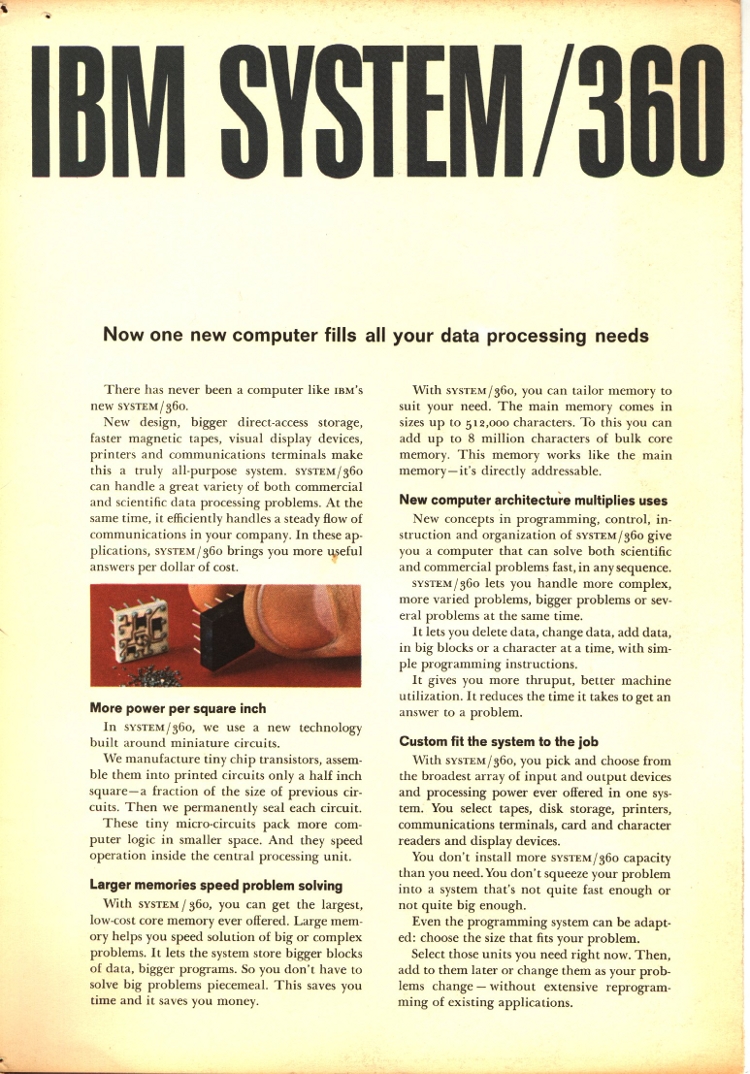Exclusive Or Character
A couple of years ago I blogged about the CCS instruction in the Apollo Guidance Computer. Today I want to tell you about the XC instruction from the System/360 ISA.
Many ISAs have some sort of xor instruction. The 360 is no different. It offers several different xor instructions which differ in the type of operands that they operate on. In all cases, the operation they perform could be summarized as (using C syntax):
A ^= B;
That is one of the operands is used as both a source and a destination.
There are the boring X (reg ^= memory), XR (reg ^= reg), and XI (reg ^= immediate). Then there is XC which is what inspired this post. XC, or Exclusive Or Character, takes two memory locations and a length and performs what appears as byte by byte xor of the two buffers. (The hardware is smart enough to operate on bigger chunks of memory but the effect is as if it was done byte at a time.) In assembly XC looks like:
XC d1(l,b1),d2(b2)
The d are 12-bit unsigned displacements while the b specify the registers with the base address. For each of the operands the actual address is dX plus the value of the bX register. The l is a length field which encodes a length between 1 and 256.
To use more C pseudocode, XC does:
void XC(unsigned char *op1, size_t len, unsigned char *op2)
{
while (len--) {
*op1 ^= *op2;
op1++;
op2++;
}
}
(This pseudo code ignores the condition code calculation and exception generation which are not relevant to the discussion.)
This by itself is neat but not every exciting…until you remember that xor can be used to zero out a register. You can use XC to zero out up to 256 bytes of memory. It turns out this idiom is used pretty often in handwritten assembly, and compilers such as gcc even produce such instructions without any special effort on the programmer’s behalf.
For example, in HVF I have this line:
memset(&psw, 0, sizeof(struct psw));
Which GCC helpfully turns into (struct psw is 16 bytes in size):
xc 160(16,%r15),160(%r15)
When I first saw that line in the disassembly of HVF years ago, it blew my mind. It is elegant, fast thanks to the microarchitecture optimizations, and once you are used to the idiom it is clear about what it does. I hope your mind was as blown as mine. Till next time!





 z/Architecture
z/Architecture